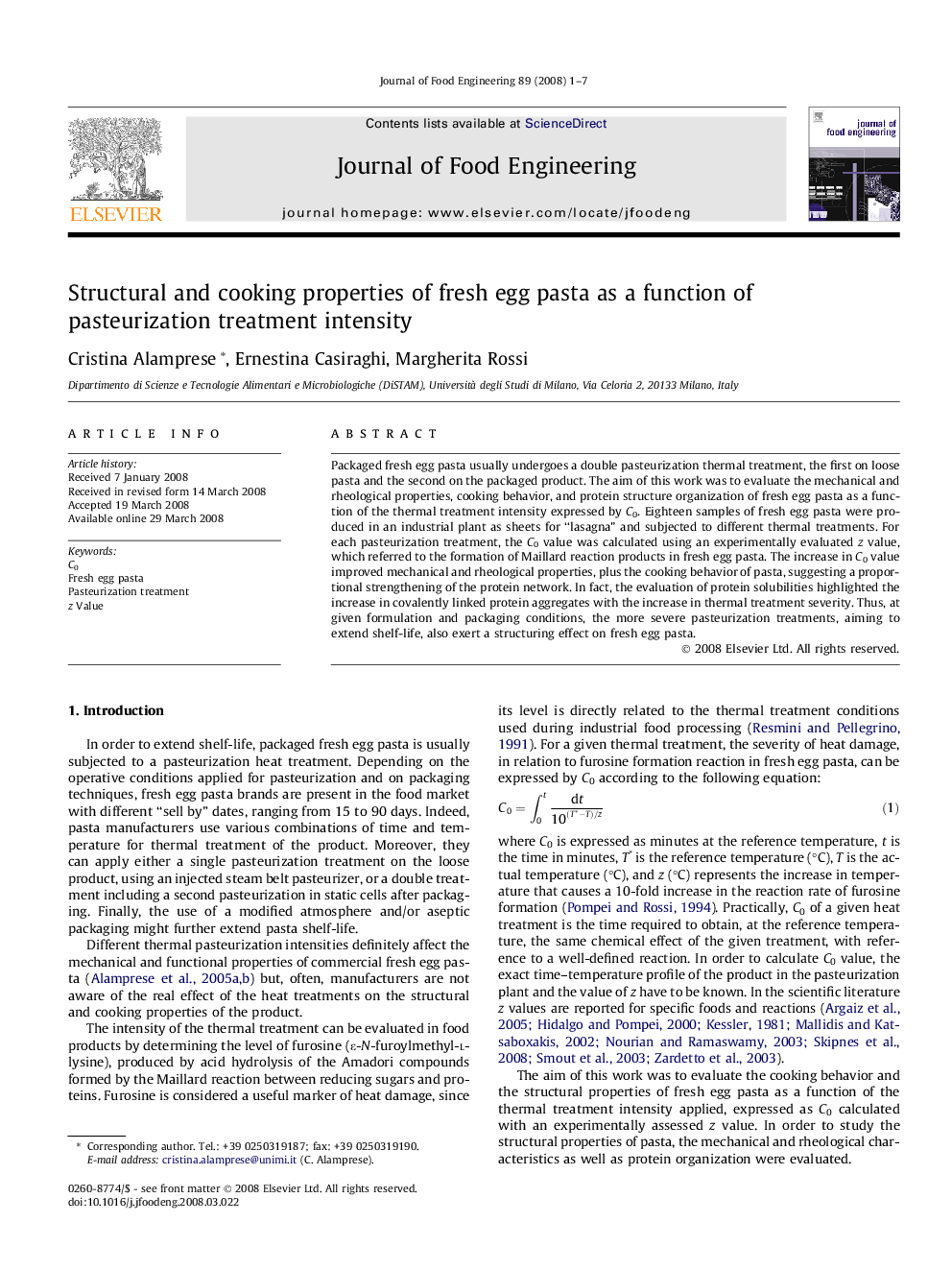| Article ID | Journal | Published Year | Pages | File Type |
|---|---|---|---|---|
| 224215 | Journal of Food Engineering | 2008 | 7 Pages |
Packaged fresh egg pasta usually undergoes a double pasteurization thermal treatment, the first on loose pasta and the second on the packaged product. The aim of this work was to evaluate the mechanical and rheological properties, cooking behavior, and protein structure organization of fresh egg pasta as a function of the thermal treatment intensity expressed by C0. Eighteen samples of fresh egg pasta were produced in an industrial plant as sheets for “lasagna” and subjected to different thermal treatments. For each pasteurization treatment, the C0 value was calculated using an experimentally evaluated z value, which referred to the formation of Maillard reaction products in fresh egg pasta. The increase in C0 value improved mechanical and rheological properties, plus the cooking behavior of pasta, suggesting a proportional strengthening of the protein network. In fact, the evaluation of protein solubilities highlighted the increase in covalently linked protein aggregates with the increase in thermal treatment severity. Thus, at given formulation and packaging conditions, the more severe pasteurization treatments, aiming to extend shelf-life, also exert a structuring effect on fresh egg pasta.
